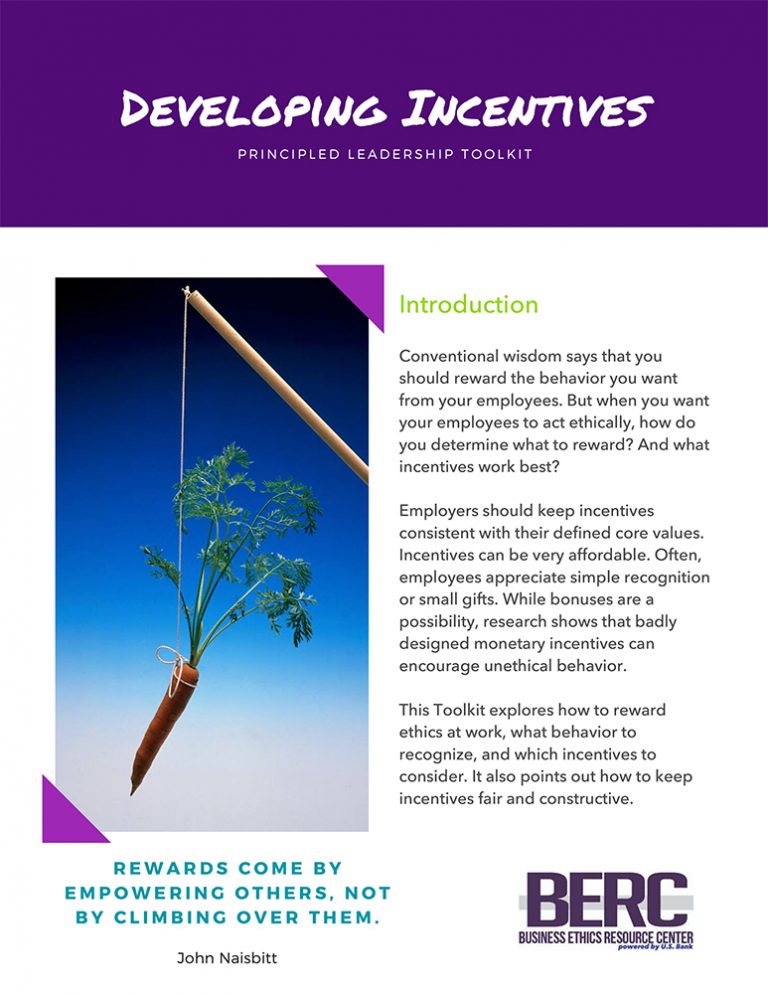“Having an organizational culture that emphasizes ethical behavior can cut down on misbehavior of organizations. Research shows that whether an organization develops a culture that emphasizes doing the right thing even when it is costly comes down to whether leaders, starting with the CEO, consider the ethical consequences of their actions. Leaders with a moral compass set the tone when it comes to ethical dilemmas” (Truxillo, Bauer, & Erdogan, 2016, p. 385).
Steve Nguyen, Ph.D. (Feb. 14, 2011; updated Oct. 2016)
Robbins and Judge (2009) offer a nice list of what management can do to create a more ethical organizational culture. They suggest a combination of the following practices:
- Be a role model and be visible. Your employees look to the behavior of top management as a model of what’s acceptable behavior in the workplace. When senior management is observed (by subordinates) to take the ethical high road, it sends a positive message for all employees.
- Communicate ethical expectations. Ethical ambiguities can be reduced by creating and disseminating an organizational code of ethics. It should state the organization’s primary values and the ethical rules that employees are expected to follow. Remember, however, that a code of ethics is worthless if top management fails to model ethical behaviors.
- Offer ethics training. Set up seminars, workshops, and similar ethical training programs. Use these training sessions to reinforce the organization’s standards of conduct, to clarify what practices are and are not permissible, and to address possible ethical dilemmas.
- Visibly reward ethical acts and punish unethical ones.Performance appraisals of managers should include a point-by-point evaluation of how his or her decisions measure up against the organization’s code of ethics. Appraisals must include the means taken to achieve goals as well as the ends themselves. People who act ethically should be visibly rewarded for their behavior. Just as importantly, unethical acts should be punished.
- Provide protective mechanisms. The organization needs to provide formal mechanisms so that employees can discuss ethical dilemmas and report unethical behavior without fear of reprimand. This might include creation of ethical counselors, ombudsmen, or ethical officers.
A good case study of an unethical organizational culture is the now defunct Enron. Sims and Brinkmann (2003) described Enron’s ethics as “the ultimate contradiction between words and deeds, between a deceiving glossy facade and a rotten structure behind” (p. 243). Enron executives created an organizational culture that valued profits (the bottom line) over ethical behavior and doing what’s right.
“A business perceived to lack integrity or to operate in an unethical, immoral, or irresponsible manner soon loses the support of customers, suppliers and the community at large*” (Tozer, 2012, p. 476).
*In addition to losing customers, suppliers and the community, I would also include losing the support of employees and managers.
References
Robbins, S.P., & Judge, T.A. (2009). Organizational behavior (13th ed.). Upper Saddle River, NJ: Pearson Education, Inc.
Sims, R.R., & Brinkmann, J. (2003). Enron ethics (or: Culture matters more than codes). Journal of Business Ethics, 45(3), 243-256.
Tozer, J. (2012). Leading through leaders: Driving strategy, execution and change. London, UK: KoganPage.
Truxillo, D. M., Bauer, T. N., & Erdogan, B. (2016). Psychology and work: Perspectives on industrial and organizational psychology. New York: Routledge.
Originally published on WorkplacePsychology by Steve Nguyen, Ph.D. Used by kind permission of Dr. Steve Nguyen. Please visit WorkplacePsychology.


